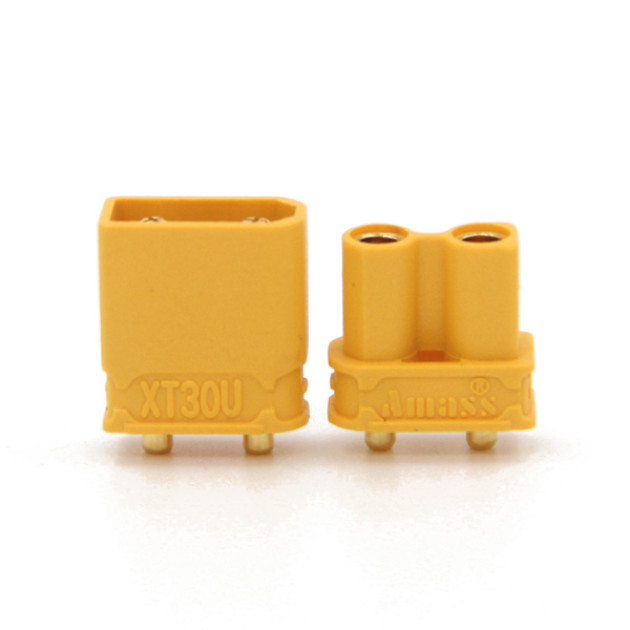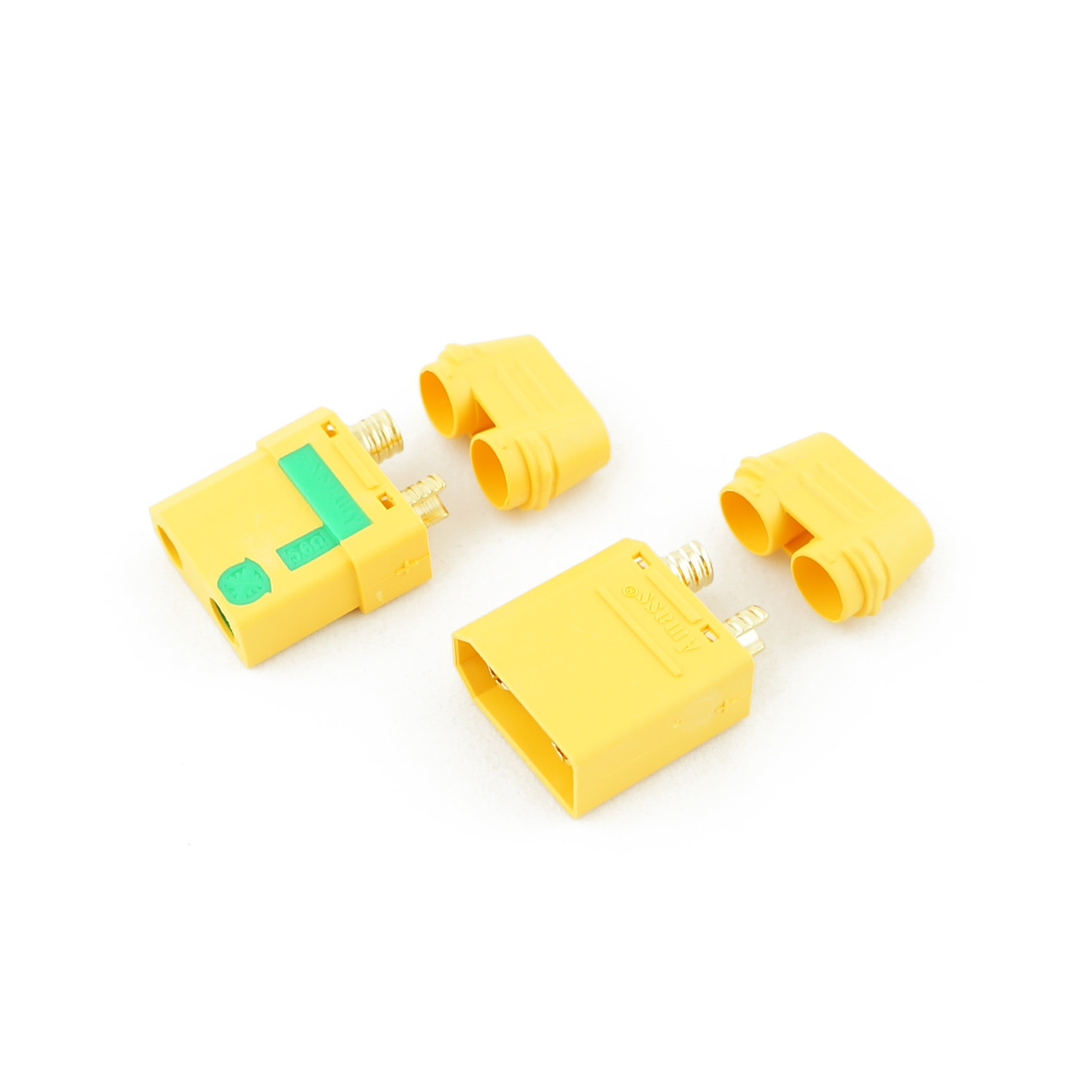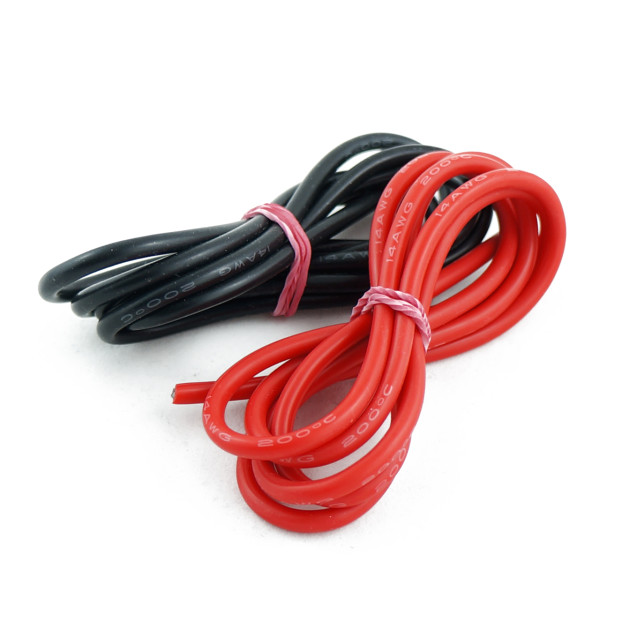Batteries and charging
If we want our quads to deliver the performance we expect, we need to give them enough electrical power. In FPV flying we primarily use LiPo (Lithium-Polymer) batteries for classic freestyle and racing, and sometimes Li-ion (Lithium-Ion) batteries for long-range flights. These batteries do not suffer from memory effect. They can be recharged from any state of charge, there is no need to “form” them, and self-discharge is minimal. However, LiPo batteries require proper care.
Parameters of lithium batteries
We distinguish several parameters that define a battery’s characteristics: capacity, cell count, voltage, discharge current, and charge current. A pack consists of multiple cells, a main connector, and a balance connector.


Cell count
Cells can be connected in parallel or in series to create the final pack. With a parallel connection, the capacities add up while voltage stays the same. With a series connection, the voltages add up while capacity stays the same. The cell count and their configuration are often part of the pack name. For example, a 6S2P pack has six cells in series and two in parallel—so 12 cells in total. In LiPo packs, cells are typically connected only in series, so the number of parallel cells is not stated—hence designations like 1S, 4S, 6S, etc.
Voltage
Each cell has its own voltage. Standard LiPo cells are about 3.3 V when empty and 4.2 V when full. The nominal voltage is 3.7 V (midpoint). We should also mention storage voltage, the level at which a battery ages the slowest and is best stored. Storage is 3.8–3.85 V per cell. As noted, in series the voltages add up. Thus a 4S pack has a nominal voltage of 3.7×4 = 14.8 V. The total pack voltage is critical when choosing the right battery for your quad. If you connect a fully charged 6S pack (25.2 V) to a quad designed only for a 4S pack, there’s a good chance you’ll burn something.
Especially with small 1S packs you’ll see HV/LiHV labeling. These packs can be charged up to 4.35 V per cell. Their nominal voltage is 3.8 V. Li-ion cells differ too: maximum is typically 4.2 V per cell, while the minimum is often as low as 2.5 V.
Capacity and energy
Battery capacity is usually given in mAh (milliamp-hours, 1 Ah = 1000 mAh). Capacity indicates the current a battery could deliver for one hour. Capacity also closely relates to the energy stored in the pack. The total energy can be calculated as capacity × voltage and is expressed in watt-hours. Whether you connect cells in series or parallel, the stored energy stays the same; what changes is whether the pack can provide more current or higher voltage. Li-ion packs typically have higher energy density (energy-to-weight) than LiPo packs.
Discharge and charge current
Discharge and charge current are tightly linked to capacity and are specified in multiples of the letter “C”, where C equals the capacity (in amp-hours). So if you have a 1300 mAh pack rated at 100C, it should theoretically deliver 100 × 1.3 = 130 A. Keep in mind many manufacturers are—let’s say—optimistic with their C-ratings, so don’t treat this as gospel. You can usually find independent tests and user experiences for common packs online.  The ability to deliver high current decreases with age, cycle count, and degradation. Since a battery isn’t an ideal voltage source, its voltage sags under load. The amount of sag correlates with the maximum discharge capability: better, higher-C packs show less voltage sag. Li-ion packs support significantly lower discharge rates than typical LiPo—around 7–10 C. If you draw more current than the pack can provide, voltage drop will be severe and the pack will heat up a lot; in the worst case it can catch fire.
The ability to deliver high current decreases with age, cycle count, and degradation. Since a battery isn’t an ideal voltage source, its voltage sags under load. The amount of sag correlates with the maximum discharge capability: better, higher-C packs show less voltage sag. Li-ion packs support significantly lower discharge rates than typical LiPo—around 7–10 C. If you draw more current than the pack can provide, voltage drop will be severe and the pack will heat up a lot; in the worst case it can catch fire.
The recommended charge current for LiPo is 1C. Quality FPV packs often handle up to 3C. Li-ion cells are typically charged at 0.5–1C.
Maintenance
LiPo packs are fantastic, offering incredible performance in a small form factor. They do require proper care—otherwise their lifespan will be short and, in the worst case, they can catch fire.
- They dislike low temperatures (it’s not recommended to fly with pack temperature below 10 °C); the chemical reactions inside don’t proceed as they should. Capacity drops and the available current is lower. If you want to fly in winter, it’s best to pre-heat your packs.
- Never short-circuit the positive and negative terminals—this can cause a fire.
- LiPo must not be overcharged, or they may ignite. Always use a proper charger and charge to 4.2 V per cell (4.35 V for HV packs).
- Do not over-discharge. Cell voltage should not drop below 3.3 V. If it drops lower, the cell will likely be irreversibly damaged. We recommend landing at 3.5 V per cell (LiPo).
- When not in use, store packs at storage voltage of 3.8–3.85 V per cell.
- Never puncture a pack—this can cause fire or explosion.
- Packs can puff over time or after high-current use. Do not continue using a puffed pack.
If after a crash you find the pack is pierced, do not charge it or use it again! A reliable indicator of damage is a chemical smell vaguely reminiscent of strawberries. Place a damaged or puffed pack in very salty water for several hours to let it slowly discharge until it becomes inert. Dispose of the neutralized pack in the red battery bin or take it to a recycling yard. Do not dispose of LiPo or other batteries in mixed household waste.
Charging
Charging is one of the most critical parts of handling lithium batteries. Always charge packs with a charger designed for them. The pack must be charged with a controlled current to an exact voltage. LiPo chargers include multiple protections to monitor the process. Even so, follow these rules: Never charge LiPo unattended, and always with the balance connector plugged in! Do not exceed the maximum charge current. For LiPo this is typically around 3C, for Li-ion about 1C. The true maximum varies by model and manufacturer. Higher charge current means faster charging, but may shorten lifespan; in extreme cases the pack can overheat and ignite. Advanced chargers offer multiple modes. We recommend Balance mode, where the charger monitors individual cell voltages and equalizes them if needed.
Battery connectors and cables
Typical FPV quads can draw anywhere from 4–160 A. Based on quad size and expected current, choose an appropriate connector for both the quad and the pack. Below are the most common connectors you’ll encounter in FPV.
| Banana Plug 4 mm |

|
The so-called banana or bullet connector. Most commonly used on chargers. |
| JST |

|
Connector rated up to
5 A. Common on RC airplanes.
|
| PH 2.0 |

|
JST PH 2.0 is used on the tiniest models, Tinywhoops. |
| A30/BT2.0 |

|
GNB A30 / BetaFPV BT2.0 is the successor to PH 2.0. It supports higher currents and is most common on more powerful Tinywhoops. GNB A30 is rated up to 15 A. |
| XT30 |

|
XT30, common on smaller 2–4" quads. Suitable up to 30 A. |
| MR30 |

|
A close relative of XT30. MR30 has three contacts and is suitable for motor-to-ESC connections. |
| XT60 |

|
XT60 is the most common connector. Used on 4–8" quads. Suitable up to 60 A. |
| XT90 |

|
XT90 is a larger connector used on heavier 7–10" quads and cinelifters. XT90 may include antispark to prevent connector arcing on plug-in. |
| QS8 |

|
A big connector for the largest builds. Continuous 110 A, short bursts up to 180 A. |
Power leads
Power leads are the cables that carry higher current. They’re typically used between the battery and the ESC, and between the ESC and the motors. Based on expected current and length, choose an appropriate thickness. In FPV we use AWG (American Wire Gauge), but you’ll also see diameters in millimetres or cross-section in mm². The smaller the AWG number, the thicker the wire. Power leads are bundles of copper strands with silicone insulation, resistant from –60 °C up to 200 °C. For 2–3" quads you’ll typically use 18 AWG; for 5", 12–16 AWG. Motor leads are often 18 AWG for larger motors on 7", 20 AWG for typical 5" motors, and 22 AWG or thinner for small 2–4" builds.

